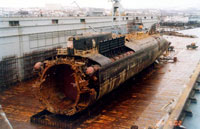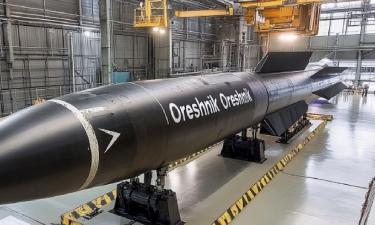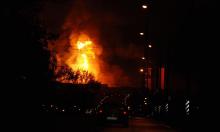Kursk Submarine Disaster: No Clue Nine Years After
On August 12, Russia marked nine years since the death of the Kursk submarine, which took the lives of 118 men. All of them were officially declared dead on August 21.

Quite a number of versions have surfaced since the terrible tragedy. One of them said, for example, that the equipment of the submarine had been stolen prior to the naval drills, in which the Kursk was going to participate. Other versions said that the submarine ran into a WWII mine or collided with a US submarine. Kursk was watching USS Theodore Roosevelt during the bombing of Yugoslavia in 1999. US submarines – Memphis and Toledo – were on duty not very far from the place where the Kursk sank.
French film-maker Jean-Michel Carre analyzed this version in his documentary titled “Kursk: A Submarine in Troubled Waters” (2005). According to the documentary, the two above-mentioned US submarines were watching Kursk. Toledo approached too close, and Memphis launched a torpedo against Kursk to prevent the attack from the Russian sub.
Both Memphis and Toledo were supposedly damaged in the maneuvers and underwent repairs in Norway and Britain. Official spokespeople for the US, British and Norwegian authorities rejected the information.
Canada ’s History Channel also said in 2005 that the two US submarines were watching Kursk in the Barents Sea. Toledo tried to approach the Russian sub but inadvertently ran into Kursk. Memphis’s captain assumed that it was Kursk that attacked Toledo and fired a torpedo at the Russian sub.
However, a number of Russian and foreign experts said that there was no torpedo attack. Therefore, Kursk might have collided with a different object.
The report from the Prosecutor General of the Russian Federation, Vladimir Ustinov, was published on June 29, 2002. In accordance with the report, it was an explosion of a torpedo on board the nuclear cruiser. The crew was killed as a result of carbon monoxide poisoning.
A part of the criminal case about the Kursk submarine is still marked as secret. Konstantin Sivkov, the Vice President of Russia’s Academy of Geopolitical Problems, said in an interview with Pravda.Ru that any tragedy like that involved aspects of accidental and objective circumstances.
“From the point of view of certain circumstances, it was a tragic accident. The area of the drills was chosen incorrectly, that is why the submarine hit the bottom of the sea. If there was a collision with another submarine, it was an accident too. However, the sailors, who survived the explosion, could have been saved if Russia’s Northern Fleet had the equipment to conduct rescue operations at the depth of 100 meters. There was such equipment in the USSR, and it was better than that of Norway or Britain, although it disappeared during the 1990s. Unfortunately, Russia has neither developed nor obtained any emergency equipment nine years after the Kursk disaster,” the specialist said.
Vadim Trukhachev
Pravda.Ru
Also read: Kursk nuclear sub tragedy remembered on stage
Subscribe to Pravda.Ru Telegram channel, Facebook, RSS!




